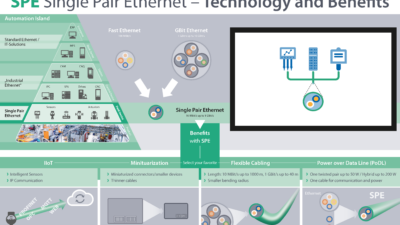By eliminating physical connections such as wires and cables from a facility's communication network, wireless technology offers many manufacturing organizations are able to run their entire operation more efficiently.
It’s been called the "smart factory" and even given the lofty moniker of "the fourth industrial revolution." The manufacturing operation of the just-around-the-corner future will be one in which networked systems monitor and direct processes, machines communicate with each other and with humans at high speeds, and the factory itself makes decisions about how to optimize and facilitate production.
By eliminating physical connections such as wires and cables from a facility’s communication network, wireless technology offers many manufacturing, chemical processing and utility organizations are able to run their entire operation more efficiently, more productively and at less cost.
However, concerns about reliability, integrity and security have hampered the adoption and use of industrial wireless, especially when wireless communication can often be disrupted by obstructions and interference in harsh industrial settings.
According to the National Institute of Standards and Technology (NIST), some strategies, tools, and best practices include:
- Understanding wireless technologies and networking basics, including a glossary of terms, a review of radio frequency (RF) considerations and a list of technical challenges (such as latency, the time it takes for data to go from source to target)
- Making a business case for wireless
- Breaking down the components of a complete wireless lifecycle, from the first defining of objectives to deployment and monitoring of the final system
- Using wireless to enhance factory safety
- Protecting and securing a wireless network
- Learning about best wireless practices such as optimal antenna placement, getting around obstructions and interference problems, and preventing redundant signal paths
- Following a set of checklists for each element of the wireless deployment lifecycle, including evaluating the factory and its operations for communications needs, comparing available technologies, and methodically designing and deploying a working wireless system.
For more advice, NIST offers a set of science-based guidelines to help users select the best wireless system for any specific industrial environment, custom-design the setup to make it work, successfully deploy it, and then ensure that the network performs as needed.
National Institute of Standards and Technology (NIST)
– Edited from a NIST press release by CFE Media. See more Control Engineering wireless stories.


